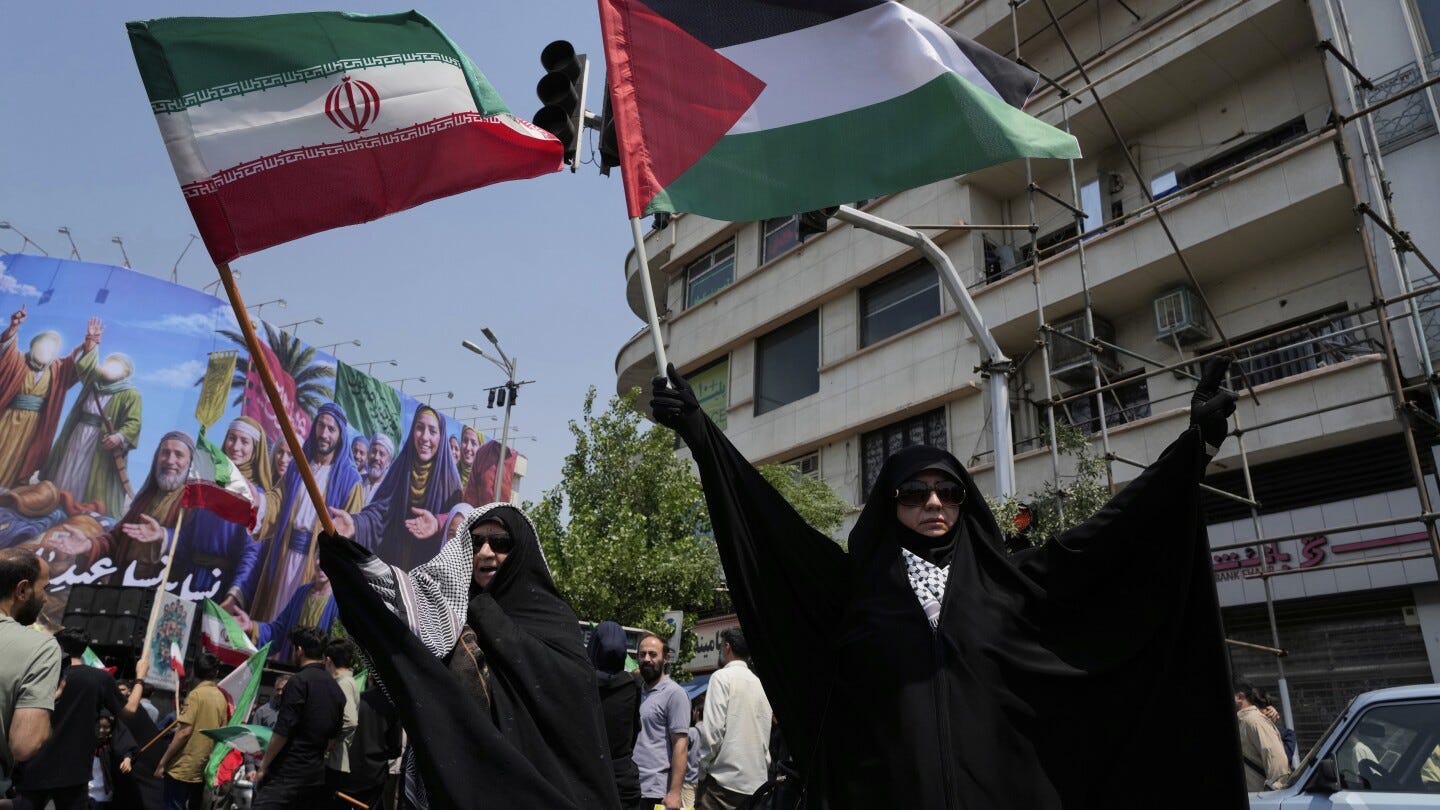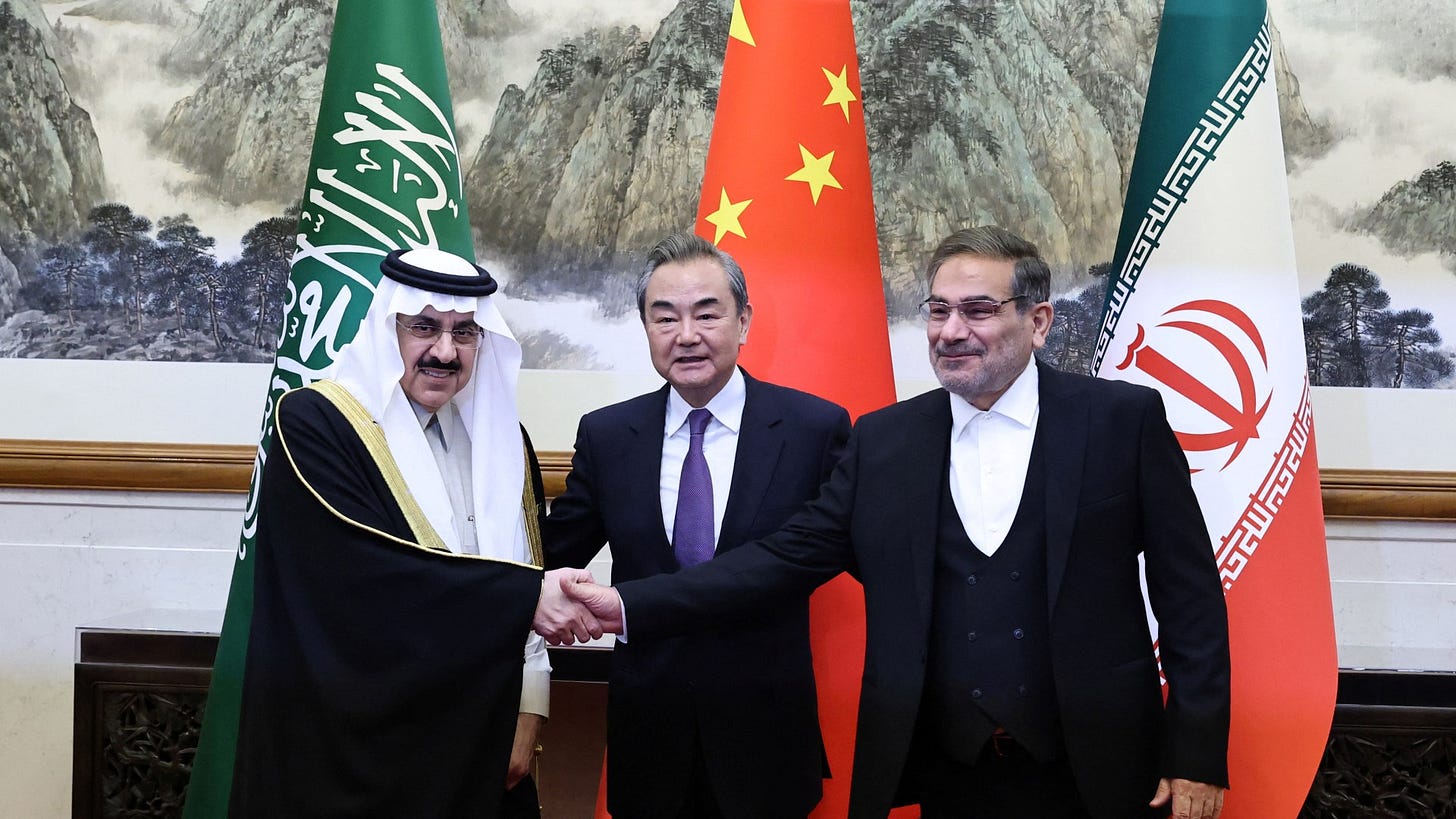Iran Loses Grip in the Middle East
Moving on From Old Conflicts
In a dramatic escalation, Israel launched airstrikes inside Iran last week, hitting military and nuclear facilities across the country. Iran responded with a direct missile barrage targeting Tel Aviv, including what appeared to be hypersonic missiles. This mutual exchange broke from the usual shadow conflict and signaled that both countries were willing to take their confrontation into the open.
But the broader regional response was telling. Despite the scale and symbolism of the strikes, there was no wider mobilization. Iran’s proxies did not escalate. Ironically, among the loudest objectors on Iran’s behalf was Saudi Arabia, a traditional foe in negotiations to restore formal relations. But this was just a strongly worded statement.
Instead of triggering a chain reaction, the Israel–Iran exchange highlighted how the region is recalibrating. Iran’s message was defiance, but its strategic position still looks defensive. In fact, Iran has taken the brunt of it from a military standpoint.
Dozens of senior Iran Revolutionary Guard officers are dead, Iran’s missile defense and launch sites have been hit, and its nuclear facilities have been badly damaged. Iran for its part has managed retaliation through indiscriminate targeting of civilian structures, but little of military significance.
Iran’s Proxies on the Defensive
For decades, Iran has relied on a regional web of proxies to extend its influence and threaten its adversaries. This “Axis of Resistance” was designed to surround Israel and give Iran a foothold on the Mediterranean while keeping at arm’s length from direct conflict. The expectation in the past was that if Israel ever struck inside Iran, the entire network would react.
That didn’t happen, largely because of Israel’s systematic degradation of this proxy network . Hezbollah launched a few limited rockets but remained restrained. There was no regional mobilization. The Houthis continued targeting shipping in the Red Sea, but without any connection to the Tel Aviv strike. Iraqi militias stayed quiet. Hamas, deeply weakened since October, was absent.
More importantly, Iran’s decision to retaliate directly rather than through its proxies may reflect necessity, not strength. Tehran likely felt it had to respond to the Israeli strike to maintain credibility, but it did so alone.
The Gulf States Play Nice
Despite the dramatic events, diplomatic relations between Israel and the Gulf states have not collapsed. The UAE and Bahrain, both parties to the Abraham Accords, issued public criticism of Israel but did not alter their strategic ties with Israel. Intelligence cooperation, trade, and quiet diplomacy continued behind the scenes.
Saudi Arabia had paused its normalization talks with Israel following the Gaza war, but the recent exchange between Israel and Iran has not ended the prospect of eventual progress despite the Kingdom’s protests. The core incentives remain: countering Iran’s regional ambitions, modernizing defense capabilities, and accessing U.S. military systems and economic partnerships.
Even with missiles flying between Tel Aviv and Iranian territory, Gulf leaders appear to be managing around the crisis, criticizing Israel but not substantively aligning themselves with either side. This reflects a deeper shift in how the region balances values and interests.
Iran–Saudi Rapprochement
One of the most surprising features of the past year has been the durability of the Saudi–Iran diplomatic thaw. Brokered by China in 2023, the agreement restored formal ties and reestablished communication between two historic rivals (I wrote about this back then). That détente has now survived one of the most volatile moments in recent memory: a direct missile exchange between Israel and Iran.
Rather than pull back from dialogue, Riyadh has remained engaged. It has not joined a regional condemnation campaign, nor has it rallied behind Iran. This is not a sign of neutrality, but a sign of Saudi confidence. The Kingdom no longer views Iran as a threat it must confront through proxies or public opposition. It is managing Tehran through diplomacy, not confrontation.
The United States has also leaned into containment. Through quiet talks hosted by Oman, Washington has reestablished communication with Iran to keep the possibility of a nuclear deal open. This posture reflects a region that sees more to gain from managing risk and providing an out for both belligerents rather than taking sides.
A Strategic Turning Point
The direct exchange between Israel and Iran is a milestone. It marks the first time the two countries have attacked each other’s territory in open fashion. But the aftermath has revealed something more consequential: Iran is not leading a regional response. It is responding alone.
Its proxy forces, once seen as a coherent threat network, are divided and hesitant. Its strategic messaging is now reactive. Its deterrent posture, while still dangerous, looks overstretched. For all the headlines around the Tel Aviv strike, the larger takeaway is this: Iran is being contained. Not defeated, but less of an antagonist with limited power projection beyond its borders..
Meanwhile, Gulf normalization continues. Saudi diplomacy with Iran has held. The United States is staying engaged. A decade ago, a missile exchange like this might have triggered wider war. Today, it signals the limits of Iranian influence and the slow formation of a more balanced, if still fragile, regional order.




